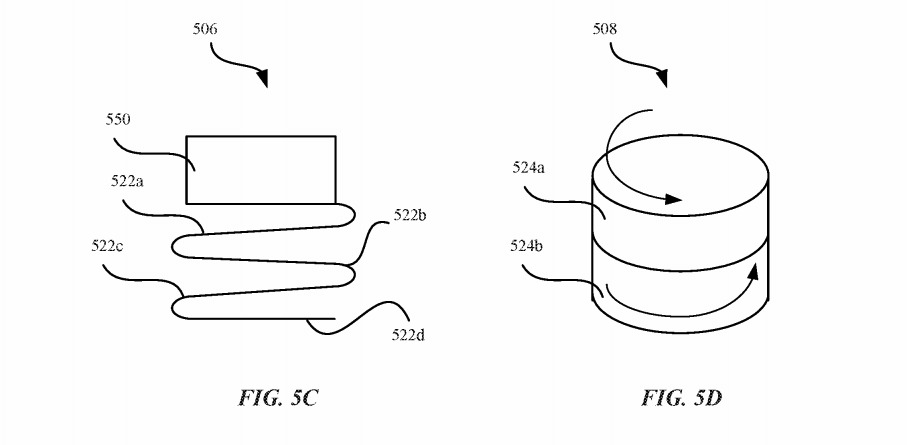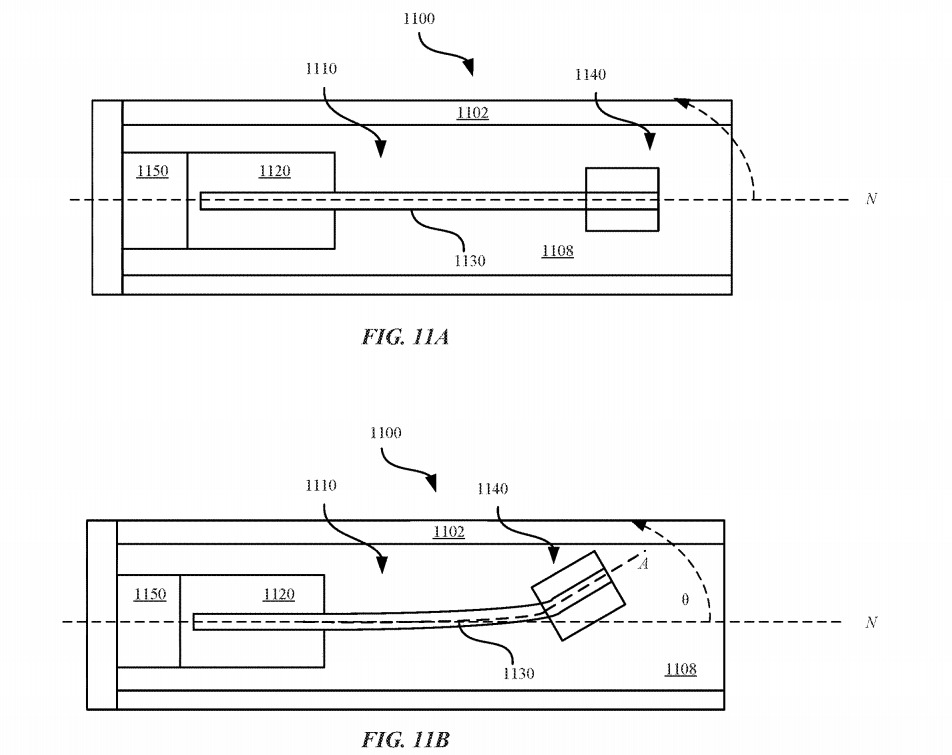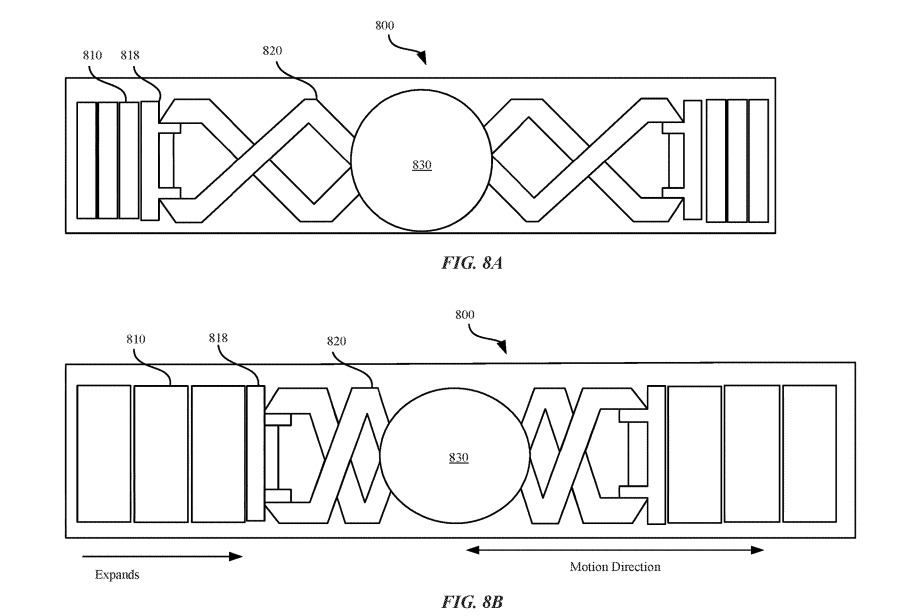The Apple Pencil could one day provide haptic feedback to the user, by using piezoelectric elements to spin internal drums that create a shaking sensation within the stylus.
The Apple Pencil, as an implement, differs greatly from other items like an iPhone or an Apple Watch as it doesn't provide haptic feedback to the user. As an input device, it doesn't offer any form of feedback at all, and instead relies on a paired iPad or iPad Pro to offer some form of stimulus to the user.
While it is feasible to add haptic feedback to the Apple Pencil, it is relatively hard to do so because of its thin shape and small size. There is also the issue of creating a haptic feedback system that doesn't heavily interfere with drawing functions.
In a patent granted on Tuesday and simply titled "Pencil haptics," Apple looks at the possibility of adding haptic feedback to the peripheral.
A typical haptic feedback system relies on some form of motor that is secured to the device's housing and equipped with an arm, one that has a heavier weight on one end than the other. By spinning the arm, the weight moves and the center of gravity for the device shifts, creating a vibrating sensation.
For the Apple Pencil, Apple offers a few suggestions to make the Apple Pencil shake or give some sort of sensation to the user. Across the majority of suggestions, Apple works on the principle the Apple Pencil receives a signal to generate haptic feedback, rather than performing on-device processing.
In some embodiments, Apple suggests a piezoelectric component could be used to oscillate inside the body of the stylus, with the movements felt on the casing itself. The oscillation can also be amplified by the use of multiple piezoelectric discs, which can greatly shift the mass of the Pencil in a way that would be felt.
These discs would be positioned in such a way as to provide a balanced weight distribution within the Pencil, so their movements won't greatly affect the weight, but would still offer some form of sensation. This system would in theory be ideal for the Pencil when it is in use, as it potentially could avoid forcing errors in a user's stylus motions.
In another system, a piezoelectric flexible beam would fit inside the housing, coupled to the walls via a rigid mount. At the end of the beam is a weight, one that greatly enhances movements of the beam once current is passed through.
Images within the patent filing also suggest there could be elements with scissor-style mechanisms that can expand and contract within the body. By holding a mass and changing whether it is expanded or contracted, these elements could move the weight of the Pencil so it is slightly heavier in one end or the other.
This shifting of weight between ends would be felt by the user. The change of how the Pencil is weighted also doesn't have to happen quickly, as a user would be able to feel the buzzing sensation of quick expansion and contraction, as well as more gradual changes through slower movements.
The filing lists its inventors as Steven J. Taylor, Brenton A, Baugh, Paul X. Wang, Alex J. Lehmann, Ivan S. Maric, Zheng Gao, and Qiliang Xu.
Apple files numerous patent applications on a weekly basis, but while the existence of a patent indicates areas of interest for Apple's research and development efforts, they do not guarantee the concepts will appear in a future product or service.
The idea of adding haptics to the Pencil has been considered for quite some time, with many stylus-related patent filings over the years making suggestions on the concept.
Filings from 2019 and 2015 suggest how haptic feedback could be used to simulate onscreen textures, giving the sensation of drawing on smooth paper or rough cardboard. Another from February 2020 suggested a haptic system could be used to monitor a user's grip.
Another from January 2020 points to how haptics could give feedback without shaking the stylus, such as by creating a shear force where a user's fingers contact the Pencil.
Apple has also considered adding full touch-sensitive controls, swappable nibs, a light-up tip, and even a system for using an Apple Pencil on any flat surface or in the air near to a host device.
 Malcolm Owen
Malcolm Owen










-m.jpg)






 Marko Zivkovic
Marko Zivkovic
 Mike Wuerthele
Mike Wuerthele
 Christine McKee
Christine McKee
 Amber Neely
Amber Neely
 Sponsored Content
Sponsored Content
 Wesley Hilliard
Wesley Hilliard

 William Gallagher
William Gallagher









2 Comments
I've been contemplating whether this would really create the sensation of friction from or not. If they could attach one end of the oscillator to just the tip, the other end to the entire rest of the Pencil, maybe it could do it? But that's just the vibration, what about the actual friction. Would the tip constantly, at a high frequency, touching and lifting off the surface create increased drag? An illusion of drag?
Interesting problem to think about.
Just one question: why?